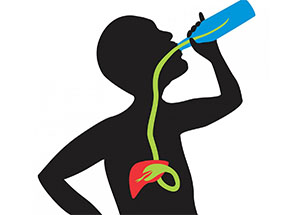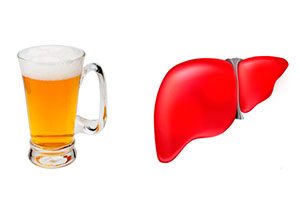How to restore the liver after prolonged alcohol consumption — proven methods
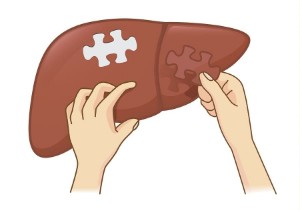 Constant alcohol consumption leads to a number of disorders in the work of internal organs. One of the main targets is the liver.
Constant alcohol consumption leads to a number of disorders in the work of internal organs. One of the main targets is the liver.
The statistics are disappointing : About 30% of people who abuse alcohol develop cirrhosis, and another 15% of cases develop hepatocellular carcinoma (colloquially liver cancer). In addition, alcohol abuse increases the risk of fatty hepatosis, hepatitis and many other pathologies.
As alcoholic liver damage develops, the adverse effects become more pronounced. There are a number of symptoms that help determine the occurrence of problems in the work of this organ.
Fortunately, most liver diseases are caused by alcohol abuse, are reversible and treatable . Liver cells have a high ability to regenerate. The timing of their recovery depends on the severity of the lesion and individual characteristics.
In this article, we will look at the basic rules and methods that will speed up the process of liver recovery after prolonged and regular alcohol intake.
Content
- 8 consequences of regular use
- Symptoms and signs of liver damage from alcohol
- Is the organ recovering after failure?
- Regeneration time
- 4 general rules during the recovery period
- Dietary nutrition
- Folk remedies
- Medicinal Herbs
- Pharmaceutical preparations
- What to do with severe damage?
- Admission rules to minimize harm
- Related videos
- Conclusion
8 consequences of regular use
Alcohol intake inevitably has a negative effect on the liver. It is this body that is forced to process and remove the decomposition products of ethyl alcohol, the most active component of alcoholic beverages.
In detail the mechanism of alcohol's effect on the liver we described in the last article.
The consequences can be reduced to several negative effects, which are most pronounced after regular prolonged intake of alcoholic beverages into the body.
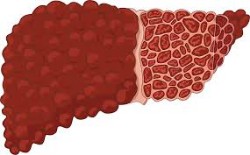
- Violation of lipid metabolism. After drinking alcohol, the production of fatty acids increases, while the synthesis of an enzyme capable of splitting them decreases. Thus, ethanol provokes an increase in the lipid content in the blood, which leads to hyperlipidemia. This condition is not normal for the body, so natural defense mechanisms are activated of the cardiovascular system . Liver cells – hepatocytes - take over the work of binding fats. The result is the accumulation of a large amount of lipids in them.
- Reduction of protein and vitamin intake. For the timely regeneration of liver tissues, a constant influx of amino acids is necessary – the building material of proteins. Ethanol has a destructive effect on the intestinal mucosa, which ensures the absorption of these nutrients. But this does not affect the absorption of fats. Together, these two factors lead to the formation of a condition known as fatty degeneration – hepatosis.
- Fatty tissue degeneration. When hepatocytes accumulate a certain critical amount of fat, these cells cease to perform their functions. Their internal structure and membrane structure change, adapting to the need to hold such a large amount of lipids.
- Alcohol oxidation in liver tissue. The process of splitting and processing ethanol in the body leads to the formation of a significant amount of acetaldehyde. This organic compound, among other features, has a high toxicity. Under its influence, foci of necrosis appear in hepatocytes – death begins. This pathological condition leads to the next stage of alcoholic damage – hepatitis.
- Alcoholic hepatitis. May occur in an acute or chronic form. The degree of severity depends on both the individual stability of the body and the doses of ethanol consumed. In both forms, a distinctive feature is a violation of the function of neutralizing exogenous, that is, external, toxins. Damaged hepatocytes are unable to participate in the detoxification process, and a decrease in their number leads to increasingly serious failures in the operation of this mechanism.
- Impaired immune function. Another very important consequence of the constant intake of alcoholic beverages is a violation of cellular immunity. An increase in the sensitivity of cells of the immune system caused by acetaldehyde leads to autoimmune reactions: cells are destroyed by the body itself, signs of inflammation increase. The body's natural filter stops coping with the function of removing toxins.
- Increased fibrin formation. One of the substances that are produced under the influence of acetaldehyde is hyaline. In the presence of an inflammatory process, dying hepatocytes are replaced by fibrous fibers, the basis of which becomes hyaline. They disrupt the normal transport of substances, causing disruptions in the nutrition of tissues and impairing the elimination of toxins, which leads to even greater damage to this organ. This is how fibrosis develops, and then cirrhosis, changes lead to the final loss of liver functions.
- Carcinogenic effect. Acetaldehyde is known as one of the carcinogens. Under its influence, the degeneration of liver cells occurs. Adenocarcinoma can be one of the outcomes of long-term alcohol abuse.

Symptoms and signs of liver damage from alcohol
Such significant changes in the structure of the liver and its internal processes cannot take place without external manifestations. With a low degree of damage, the body can still use reserves to compensate for the partial loss of liver tissue performance. With the further development of the pathological process, the first symptoms and signs of cirrhosis and other severe lesions become more pronounced.
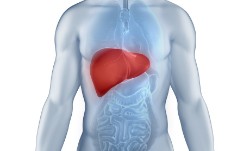
- Digestive disorders. This group of symptoms includes those unpleasant manifestations that are associated with enzyme activity. First of all, the occurrence of nausea and even vomiting is noted after eating foods that require a significant amount of bile to process. Its production decreases as the percentage of healthy tissues decreases, which also leads to intestinal disorders.
- Skin manifestations. A diseased liver and metabolic problems are often manifested by rashes on the skin, changes in its color, and the appearance of peeling. With increasing intoxication, they will become more and more obvious. At the first stages, the changes relate to the appearance of an unhealthy, dull color of the skin, as hepatitis develops, a characteristic yellowish tinge appears. The rashes are in the nature of spots or small rashes. It should be borne in mind that intoxication increases the tendency to allergic reactions, so itching and scratching on the skin are often the result of increased sensitivity to allergens.
- Unpleasant sensations in the abdominal cavity. After eating heavy, fat-rich food, there is a feeling of heaviness and pain in the right side of the abdomen. At the same time, some say that the liver seems to &171;ache&187; or &171;pulls&187;. Separately, this sign does not indicate the onset of pathological changes, but is taken into account in conjunction with other symptoms. With the progression of alcohol damage, the soreness increases.
- Decrease in performance . The dysfunction of this organ manifests itself in noticeably more rapid fatigue , sleepy and apathetic. These signs are closely related not only to oppression nervous activity , but also a decrease in blood pressure.
- Decreased appetite and weight loss. Digestive and metabolic disorders lead to a significant decrease in appetite. The patient intuitively avoids fatty and spicy foods, after which he gets worse. The absorption of proteins and carbohydrates suffers due to a violation of metabolic mechanisms. The consequence of this is the weight loss of patients.
- Changing the color of waste products. Due to a violation of the mechanism of bilirubin transformation, the color of urine and feces changes: fecal masses discolor, and urine, on the contrary, darkens. This sign is observed with the development of hepatitis.
Is the organ recovering after failure?
Hepatocytes are characterized by a high ability to regenerate. In a normal state, this process goes on continuously, and visible signs of the disease appear only when compensatory capabilities are exhausted.
 In the early stages, recovery occurs in the vast majority of cases when the adverse effects of ethanol are stopped. That is, after completely giving up alcohol, a person's liver can recover on its own.
In the early stages, recovery occurs in the vast majority of cases when the adverse effects of ethanol are stopped. That is, after completely giving up alcohol, a person's liver can recover on its own.
With hepatosis, the prognosis for the development of the situation is very favorable for patients seeking to change their lifestyle.
Hepatitis requires deeper and more systematic treatment, but hepatocytes actively divide and increase in size to replace the dead. The replacement of liver cells with fibrin fibers is an irreversible process, the functioning of the organ is restored due to the surviving areas of normal tissue.
Terms of regeneration
How long after giving up alcohol does the organ return to its former functions? The time required for recovery depends on the degree of liver damage and the duration of administration.

In the case of primary, albeit lasting several days, intake of large doses of ethyl alcohol into the body, it takes about two weeks to neutralize its decomposition products and return to normal performance.
If such episodes are repetitive, then each time the recovery period will be longer.
With the development of inflammatory processes, normal functioning should be expected no earlier than six months after the last intake. Diseases such as cirrhosis can cause dysfunction for several years, and recovery will depend largely on the treatment performed.
4 general rules during the recovery period

- Rejection of alcohol-containing products. Assumes the complete exclusion of ethyl alcohol intake from the diet. In the first period, even medicines containing an alcohol solution, such as tinctures, should be avoided. Even episodic returns will lead to a general ineffectiveness of treatment.
- Compliance with the norms of a healthy lifestyle. Includes the establishment of a work and rest regime. The degree of acceptable involvement in work is determined based on the patient's well-being. Creating conditions for a night's rest and maintaining an optimal level of physical activity will help in recovery.
- Creating a balanced diet based on dietary prescriptions. In diseases in which the liver has become the main affected organ, a sparing diet is prescribed. Its composition allows you to make a daily menu, preserving the variety and flavor richness of food. It is necessary to ensure that the quantity and quality of the food consumed are sufficient.
- Seeking medical help. If there is reason to assume that the process of alcohol poisoning has passed into the stage of fatty degeneration, then further treatment should be prescribed by a doctor. He has at his disposal numerous medications, physiotherapy procedures, and, if necessary, surgical methods.
Dietary nutrition
The classic diet for people suffering from liver and gallbladder diseases is table No. 5. It involves the complete elimination of spicy and fatty foods from the menu.
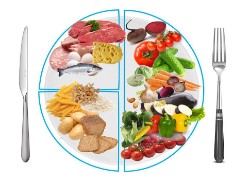 Imposes strict restrictions on the choice of cooking methods – frying is prohibited, stewing is undesirable. Preference is given to steaming and cooking.
Imposes strict restrictions on the choice of cooking methods – frying is prohibited, stewing is undesirable. Preference is given to steaming and cooking.
In modern conditions, it will be convenient to use a slow cooker for cooking dietary dishes, since this unit allows for the most gentle processing of products.
Since protein assimilation is impaired, special attention is paid to the intake of a sufficient number of animal products from among the permitted ones. These include veal, chicken, rabbit meat, and lean fish. Pork and lamb are not recommended, as are eggs. It is desirable to have a large amount of vegetables and fruits in the diet.
Vegetables it is preferable to eat after heat treatment, fruits and berries - fresh or in the form of drinks and desserts. The exception is sour fruits, as they can cause exacerbation of problems with the gallbladder.
Folk remedies
Some folk methods do have proven effectiveness and can help restore the normal functioning of the organ. The most proven include:

- Honey. A recognized means to accelerate regeneration. To improve the liver, it is suggested to use a mixture of honey and cinnamon. For 300 g of honey, you need to take 1 tablespoon of ground cinnamon. Mix thoroughly and let it brew for a day. Take before meals, 2-3 times a day, a single dose of 2 tablespoons. This remedy will also help to maintain strength due to the intake of carbohydrates. Drink this remedy for 10-12 days, then you need to take a break. Read more about the effect of honey on the liver here →
- Wood mushroom. It is traditionally taken as a drink. To do this, grated mushroom is infused with warm water during the day. The resulting drink should be taken half a glass before meals, 3 times a day, but no more than 10 days in a row.
- Juices. Fruit and berry juices are rich in vitamins and can accelerate all metabolic processes. Carrot, tomato, pomegranate, and pumpkin juices will be the most effective for liver problems. They should be consumed carefully, no more than a liter per day, preferably in a diluted form.
Medicinal Herbs
Some plants have hepatoprotective and regenerating properties, and will also help cleanse the liver of harmful substances. You should use one of the following recipes:
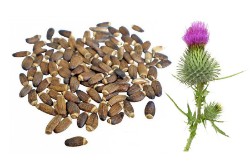
- Milk thistle. The fruits of this plant have proven to be an excellent remedy for inflammation in the liver and gallbladder. To make medicinal tea, you need 1 tsp of fruit and 250 ml of boiling water. Leave in a ceramic or glass container with a lid for 20-25 minutes. Strain it. Drink before meals, 100-120 ml, can be mixed with ordinary tea or mint decoction to improve the taste.
- St. John's Wort. Its leaves have an anti-inflammatory effect, it is used as an effective medicine for hepatitis and for cleaning up toxic liver lesions. The most convenient method of reception is considered to be a decoction or tea. A decoction of St. John's wort with currants is prepared from equal parts of both – 1 tsp per 300 ml. Pour hot water and insist on a water bath for 15 minutes. You need to drink before meals, 150 ml each.
- Oats. is known for its ability to remove toxins and bind fats. In case of alcoholic damage to the liver tissue, oatmeal jelly can be used for effective cleaning. To prepare this remedy, you need to additionally grind 500 g of oat flakes. Pour 1.5 liters of hot water and let it stand for 5-6 hours. Strain the resulting mixture, bring to a boil and keep on fire for another 5 minutes. Cool it down. Drink 0.5 cups before meals.
Pharmaceutical preparations
Several groups of drugs are used as medicines for the restoration and protection of hepatocytes, prevention and treatment of alcoholic liver damage.
Vegetable
Many herbal tablets are based on various medicinal plants and their combinations.
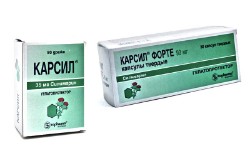
- Karsil. Is made from milk thistle fruits. Binds toxins, preventing them from destroying hepatocytes. It is available in the form of tablets in a shell. It is suitable for the treatment of adults and children over 12 years old.
- Allochol. It is based on nettle and garlic. It supports the production of bile and facilitates its excretion. It can be used for patients over 3 years of age.
- Liv 52. Inexpensive combined preparation, includes a large number of extracts of medicinal plants, including chicory, nightshade, yarrow. It is used for adults and children over 2 years old.
Of animal origin
- Hepatosan. Pig liver cells were used as raw materials. The main action is the elimination of toxins and the promotion of regeneration. May cause allergic reactions.
- Sirepare. The raw material was the liver tissue of cattle. It is most effective in hepatosis. They are administered parenterally – in / m or in / V.
Synthetic

- Ursodeoxycholic acid preparations: Ursofalk, Ursosan. Regulation of lipid metabolism, lowering cholesterol levels, restoration of bile production.
- Heptral. Contains a regulator of lipid metabolism – ademethionine. It has a complex effect: protects and cleanses liver tissues, counteracts their replacement with fibrin.
Phospholipid preparations
- Essentiale forte. The main effect is protective, supports the structure of the cell membrane, prevents the process of fibrin replacement of hepatocytes.
- Essliver forte. Combination of phospholipids with vitamins. Prevents the development of fibrosis, supports the function of detoxification. The vitamin complex helps tissue regeneration.
What should I do with a severe lesion?
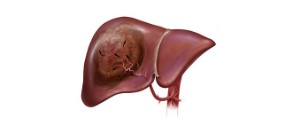 In the severe stage, concomitant pathologies develop that weaken the body. Arterial hypertension occurs, fluid excretion worsens, as a result of which ascites develops, the heart and lungs suffer.
In the severe stage, concomitant pathologies develop that weaken the body. Arterial hypertension occurs, fluid excretion worsens, as a result of which ascites develops, the heart and lungs suffer.
At this stage, a cure at home seems unlikely. Cirrhosis, cancers require not only medication, but also surgery.
The prognosis depends on the patient's age, willingness to change their lifestyle, and timely medical care. The recovery period is also very long.
Admission rules to minimize harm
- Quantity and quality. It is believed that the consumption of more than 70-80 g of pure ethyl alcohol daily leads to the occurrence of persistent disorders in the body. Accordingly, a relatively safe dose would be 1 glass of wine or 100 g of cognac or 1 liter of beer, but not every day. Mixing drinks or drinking of questionable quality increases the likelihood of adverse effects.
- The right combination. You should not drink alcohol on an empty stomach: damage to the intestinal mucosa will cause an increase in the number of toxins that heptocytes will encounter. You should not drink and consume alcohol spicy and fatty. A better solution would be lean meat, fresh or stewed vegetables, baked fish.
- Movement. For faster elimination of alcohol breakdown products from the body, moderate physical activity should be provided the next day after ingestion. You can not lie in bed or do sedentary work: stagnation will only worsen the situation.
Related videos
We recommend watching the following videos:
Conclusion
Thus, hepatocytes can regenerate when favorable conditions are created. It is only necessary to adhere to certain rules and not deviate from them. The main ones will be complete abstinence from alcohol during treatment, adherence to the necessary diet, following the doctor's requirements and taking prescribed medications.
